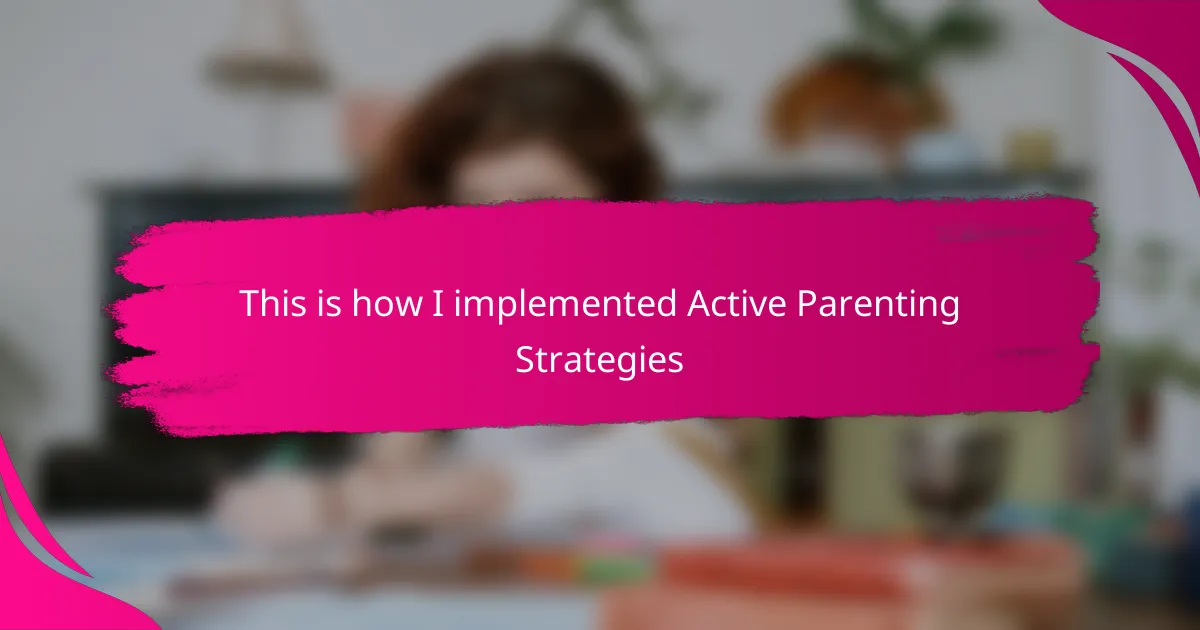Key takeaways
- Active parenting involves being present and engaged in a child’s life, balancing discipline with empathy.
- Consistent communication and positive reinforcement are essential for building trust and confidence.
- Creating dedicated, distraction-free time fosters deeper connections and effective communication.
- Flexibility and empathy are crucial in overcoming parenting challenges and promoting emotional growth.
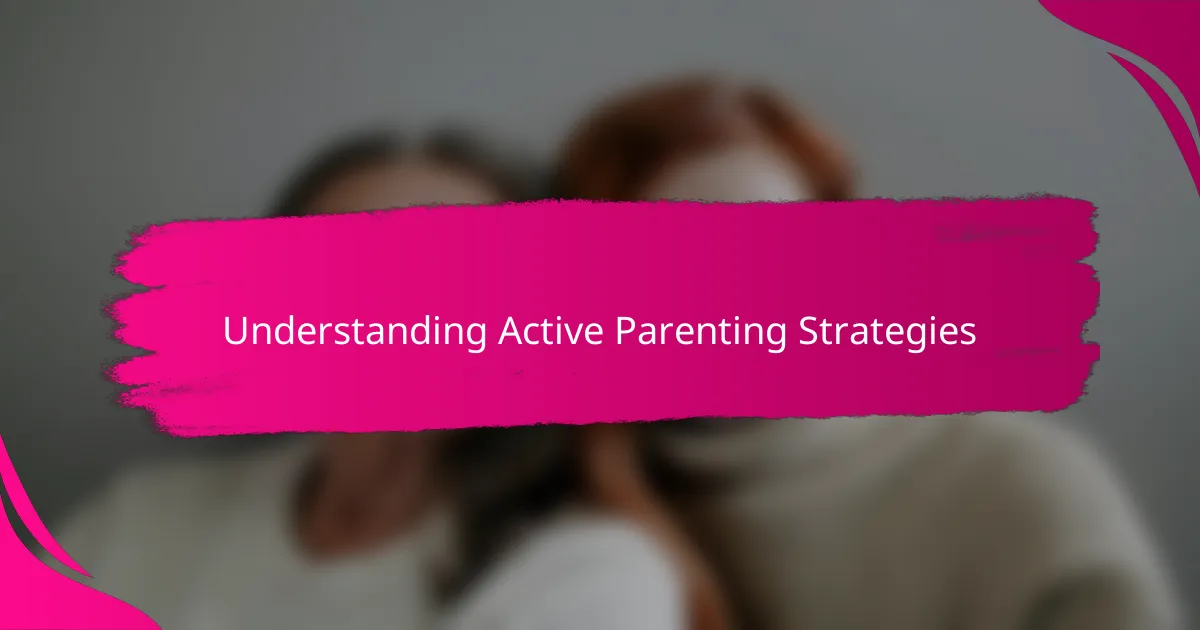
Understanding Active Parenting Strategies
Active parenting strategies, to me, mean being fully present and engaged in my child’s daily experiences—not just reacting, but proactively guiding. Have you ever noticed how much more connected you feel when you listen deeply to your child’s worries or joys? That connection is at the heart of active parenting.
It’s about striking a balance between setting clear boundaries and showing empathy—something I learned the hard way. Early on, I realized that discipline without understanding felt cold, but blending kindness with consistency made a huge difference in how my child responded.
I often ask myself: Am I fostering independence while still supporting my child emotionally? Active parenting isn’t about perfection; it’s about intentional, thoughtful involvement that helps children thrive emotionally and socially.
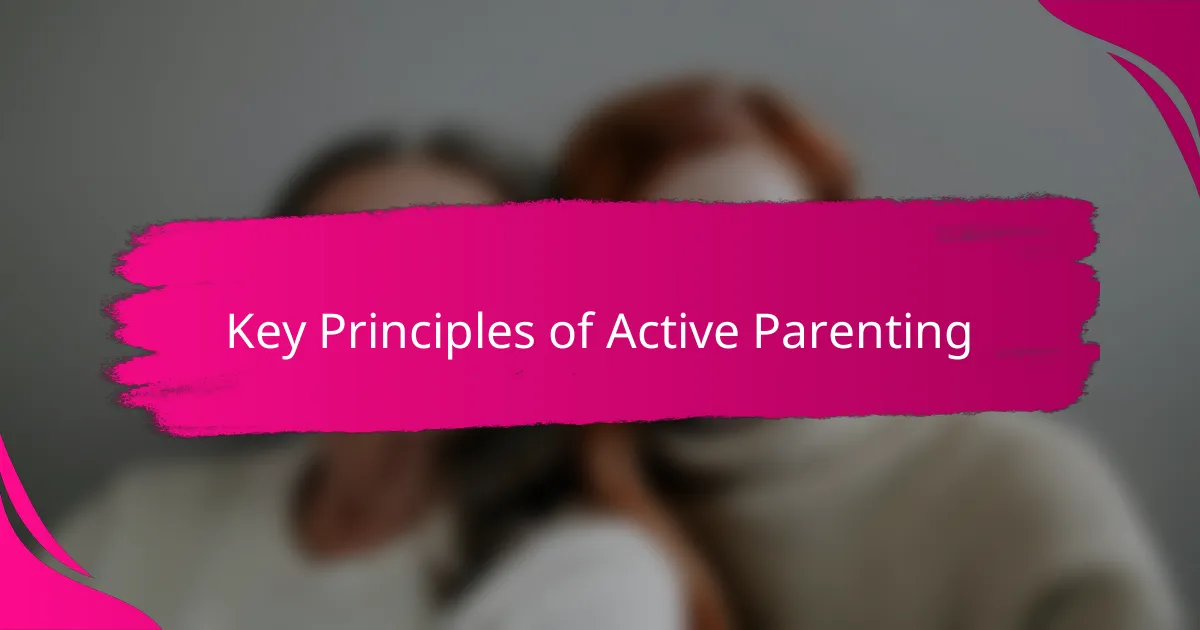
Key Principles of Active Parenting
One key principle I found essential is consistent communication. I made it a daily habit to check in with my child—not just about homework or chores, but about feelings and dreams. Have you ever noticed how a simple question like, “How was your day?” can open doors to meaningful conversations that build trust over time?
Another principle I embraced is the power of positive reinforcement. Instead of focusing solely on mistakes, I learned to celebrate small victories and efforts. This shift didn’t just boost my child’s confidence; it changed the entire atmosphere at home, making learning and growing feel safe and exciting rather than stressful.
Lastly, I realized that modeling the behavior I wanted to see was non-negotiable. Children pick up on our actions far more than our words. So I challenged myself to show patience and respect daily, knowing that these subtle demonstrations are the real lessons my child absorbs. Wouldn’t you agree that actions truly do speak louder than any lecture?

Preparing for Implementation at Home
Before I even introduced active parenting techniques at home, I took time to reflect on my own habits and environment. I asked myself, “Am I truly ready to be more present and intentional every day?” Preparing my mindset was just as important as planning practical steps.
I also created a quiet space where my child and I could connect without distractions. It wasn’t about fancy setups but making sure this time felt sacred—no phones, no TV, just undivided attention. Have you ever noticed how small changes like this can totally shift the energy between you and your child?
Finally, I enlisted my partner’s support to keep consistency intact. We talked through our goals and agreed on ways to encourage each other when things got tough. From my experience, having this shared commitment made implementation feel less overwhelming and more like a team effort.
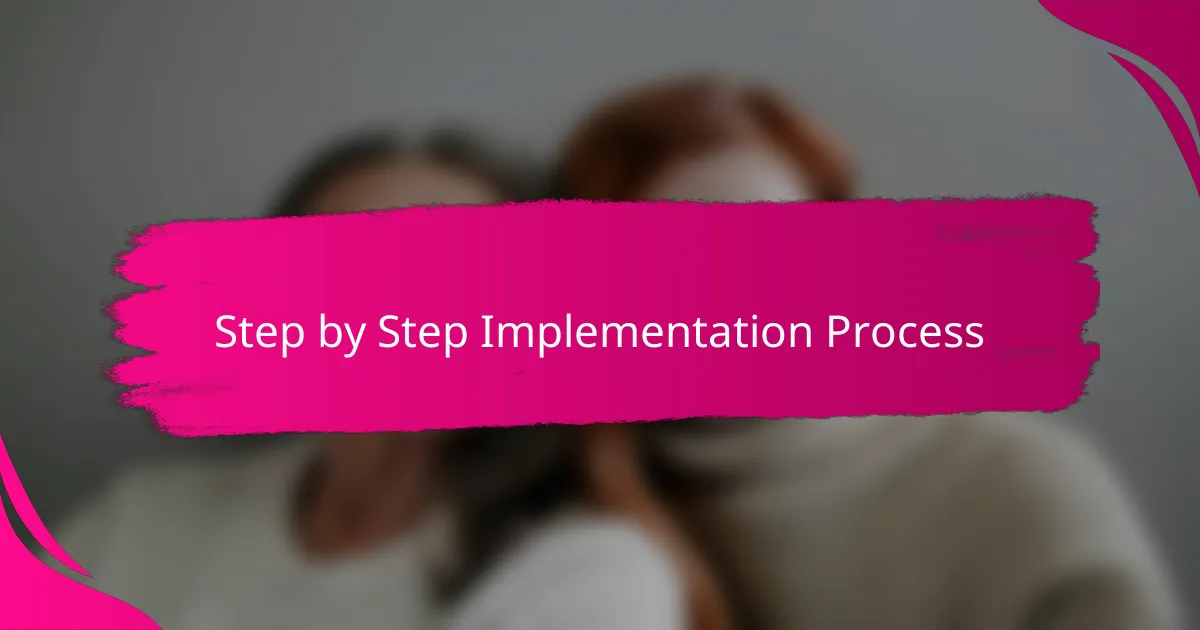
Step by Step Implementation Process
The first step I took was to break down these strategies into daily, manageable actions. Instead of trying to overhaul everything at once, I began by dedicating a few focused minutes each day to truly listen and engage with my child. Have you ever tried carving out ‘pause moments’ amidst a chaotic day? Those small intentional breaks made all the difference in building genuine connection.
Next, I established simple rituals that reinforced active parenting without feeling forced. For example, we started a “highlight of the day” chat during dinner, turning an ordinary meal into a trusted space for sharing and encouragement. It took some time to become natural, but once it did, our communication blossomed in ways I hadn’t anticipated.
Finally, I regularly reflected on what was working and what needed adjusting. Whenever I noticed resistance or frustration creeping in—either from me or my child—I’d pause and ask myself, “How can I respond with more patience or support right now?” This ongoing self-check helped me stay aligned with the principles of active parenting, making the process both dynamic and deeply rewarding.
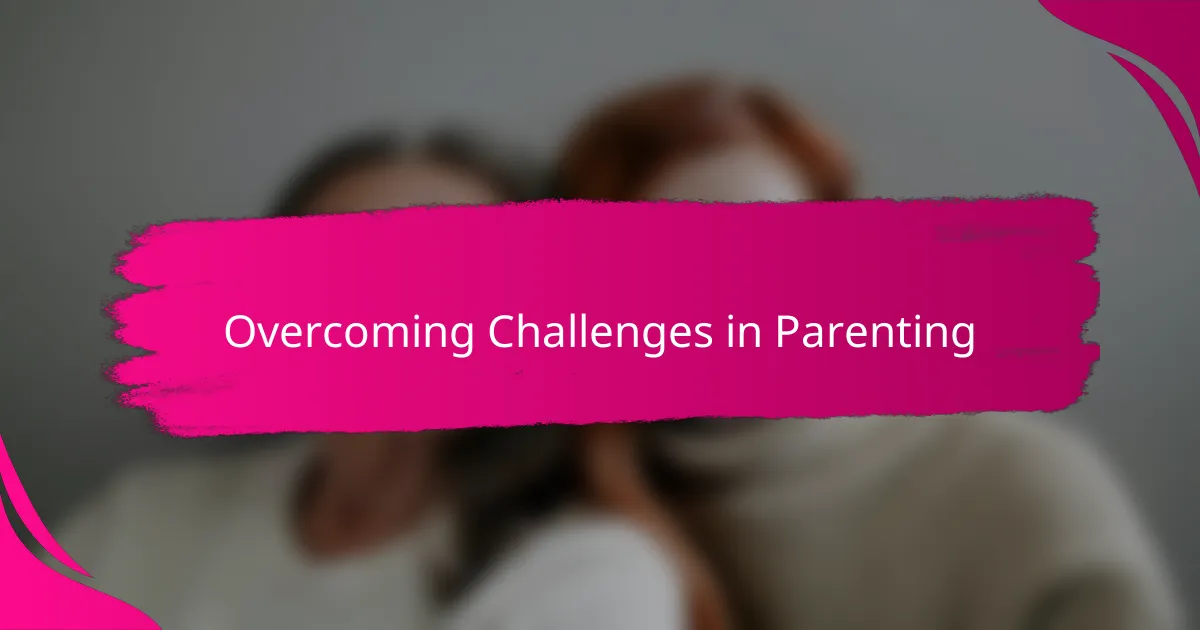
Overcoming Challenges in Parenting
Challenges in parenting often feel like unexpected storms, testing not just my patience but my resilience. I recall moments when my child’s stubbornness clashed with my desire for harmony—those times made me realize that flexibility, not rigidity, was key to navigating hurdles. Have you ever found that bending a little can actually create stronger bonds?
There were days when frustration threatened to overwhelm me, yet pausing to breathe and remind myself of my child’s perspective shifted my approach entirely. I learned that empathy isn’t just a nice-to-have; it’s a bridge over the toughest conflicts. When I embraced that mindset, disagreements transformed into opportunities for growth rather than battles.
I also discovered that asking for support was one of the hardest yet most empowering steps. Whether it was leaning on my partner or seeking advice from fellow parents, sharing the load made challenges feel less isolating. Don’t we all need that reminder that parenting, with all its struggles, isn’t something we have to face alone?

Measuring Success and Adjustments
Measuring success in active parenting felt less like checking off milestones and more like noticing the subtle shifts in our daily interactions. I remember a day when my child voluntarily shared a difficult feeling without prompting—that moment told me I was on the right track. Isn’t it amazing how these small signs reveal deeper emotional growth?
Adjustments came naturally as I observed what resonated and what didn’t. When I saw resistance or tension creeping in, I didn’t shy away but leaned into those moments, asking myself how I could respond with more empathy or patience. Have you ever realized that flexibility isn’t just helpful but essential in creating a nurturing environment?
Sometimes, success wasn’t about perfect outcomes but about my willingness to pause, reflect, and pivot. Tracking progress became less about rigid measures and more about staying tuned into our evolving connection. From my experience, this ongoing dance of evaluation and adaptation made active parenting not a static goal but a living, responsive practice.
